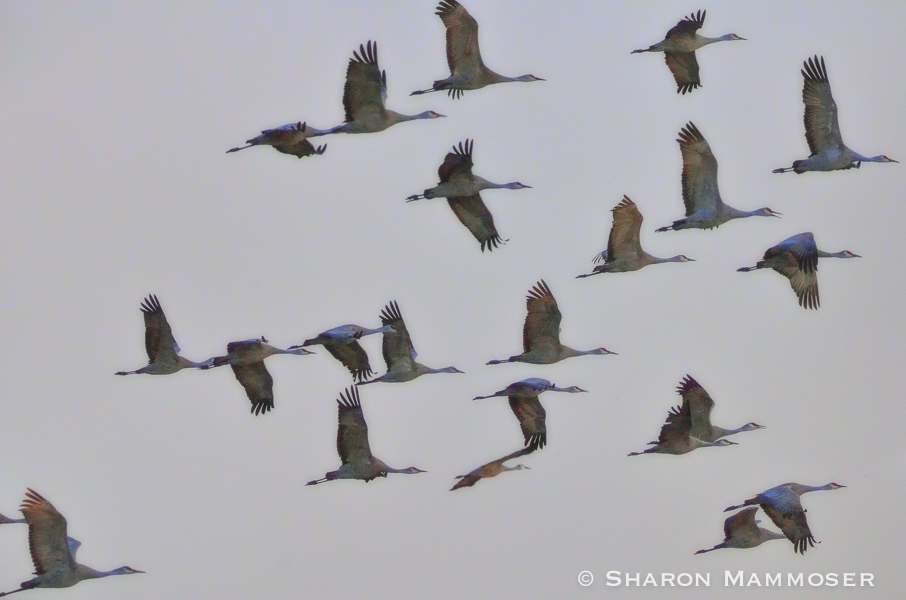 The call of a sandhill crane is unmistakable, and to those familiar with the bird, it seems to stir something deep in one’s soul. When thousands or millions are present–WOW, this is an amazing spectacle!
The call of a sandhill crane is unmistakable, and to those familiar with the bird, it seems to stir something deep in one’s soul. When thousands or millions are present–WOW, this is an amazing spectacle!
Last spring my husband and I spent a few days in Nebraska witnessing the annual migration of the sandhill cranes. For one night we slept in a tiny photography blind–6 feet long, by 5 feet tall by 6 feet wide–and got to see thousands of cranes fly into the river at sunset and then out again at sunrise. It was a unique experience for sure and definitely not for everyone! (No floor or heat, you are forbidden to leave the blind for fear of spooking the birds, and no bathroom –just a 5 gallon bucket!) The birds roost in the shallow water and on the sandbars in the river.

Let’s learn some things about this awesome bird!
1.Sandhill cranes are the most common and wide ranging of 15 species of cranes in the world. Of the 15, 6 are considered endangered.
2. Cranes are one of the oldest living birds on Earth; fossil record found in Nebraska indicate they have been around for 10 MILLION YEARS! To me, this is the most astonishing fact of them all! What a successful bird with a long history.
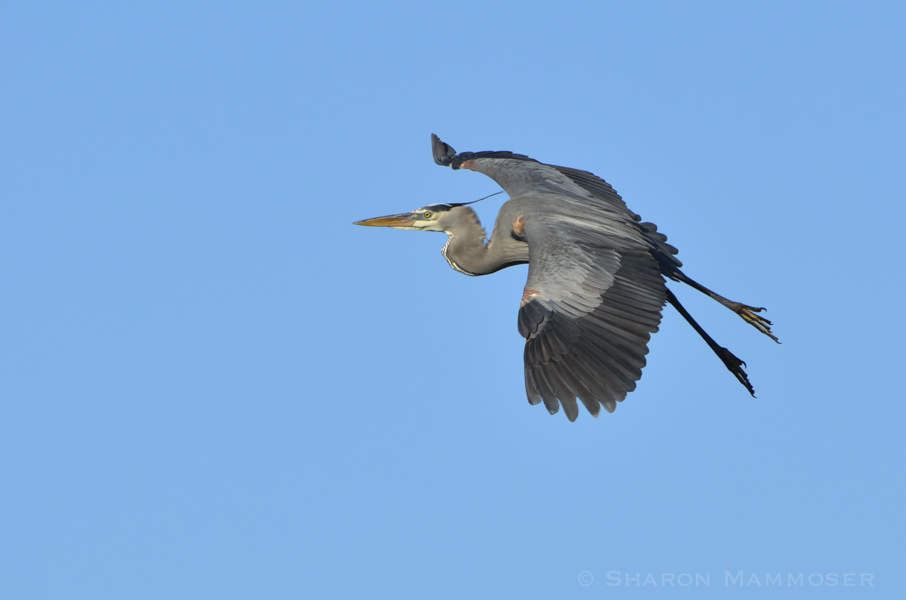
3. Many people use the term heron and crane interchangeably, but this is not correct. True, both have long legs, long necks, long bills, and a big wingspan–up to 6 feet!– but they are actually only distantly related. Some differences are: cranes live longer–10-20 years rather than herons who live 5-7 years, cranes usually lay only 2 eggs while herons lay 4-7 and cranes fly with their necks straight while herons curl theirs up in flight.
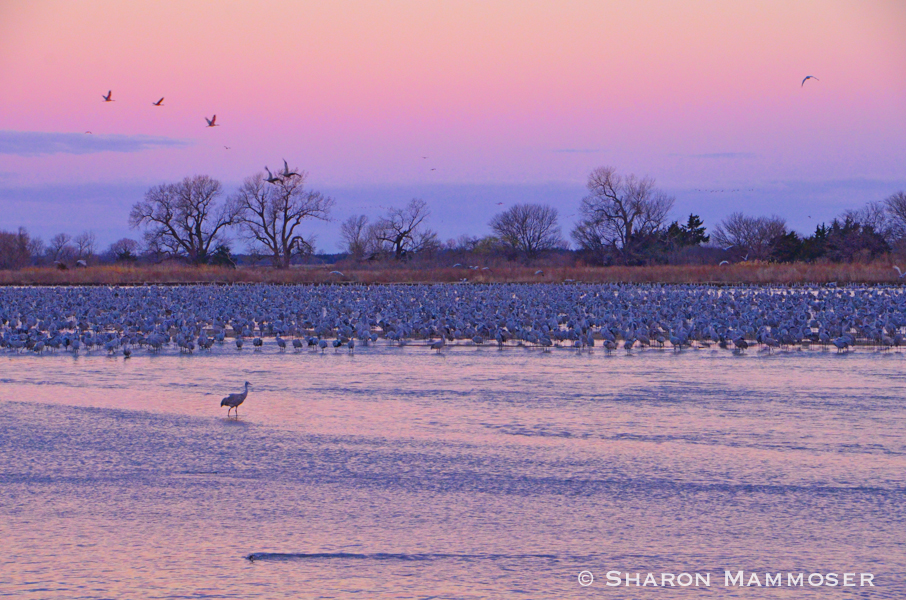
4. 80% of North America’s sandhill cranes use a 75 mile section of the Platte River in Nebraska during spring migration, in March and early April. At the peak, there could be half a million sandhill cranes there! This is one of the most amazing wildlife spectacles on Earth! After leaving Nebraska the birds head north to their breeding grounds in Canada and Alaska.Druing migration they may fly 400-500 miles in one day, usually at an altitude of around 6000-7000 feet, though it is not unusual to see them at 13,000 feet in areas such as the Rocky Mountains.
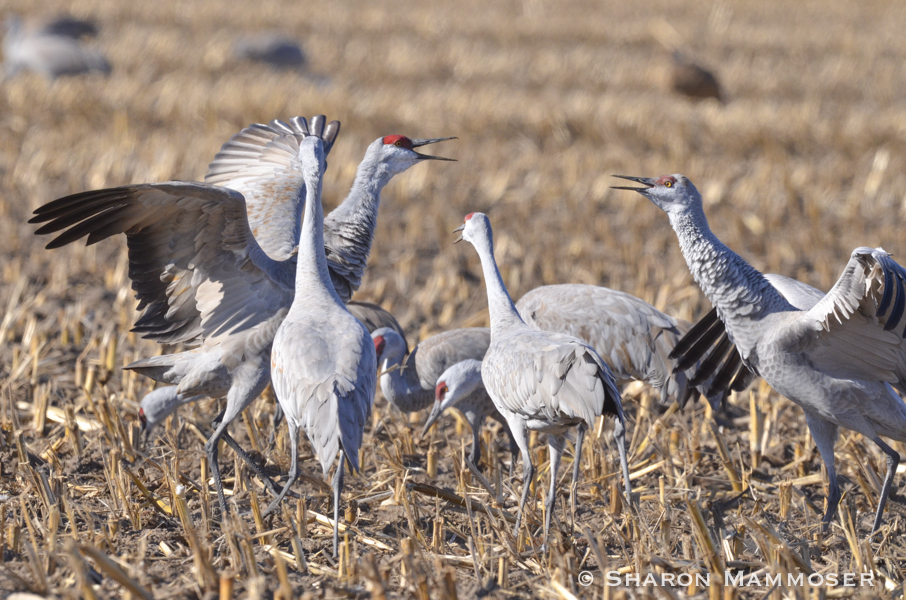 5. The habitat of sandhill cranes is fields, prairie, marshes and tundra. They nest around marshes and bogs, creating their nests right on the ground. Both sexes help build the nest, which is a mound of plant material pulled up from around the site.
5. The habitat of sandhill cranes is fields, prairie, marshes and tundra. They nest around marshes and bogs, creating their nests right on the ground. Both sexes help build the nest, which is a mound of plant material pulled up from around the site.
6. Most of the time female sandhill cranes lay 2 eggs. Sometimes they might lay only one and in rare instances, they may lay 3. If more than one is laid, it is not unusual for only one to survive. And many will not make it through their first year of life.
7. Both parents incubate the eggs for 29-32 days, though this is not exactly a 50-50 split of duties. Females have night duty and also spend part of the day on the nest.
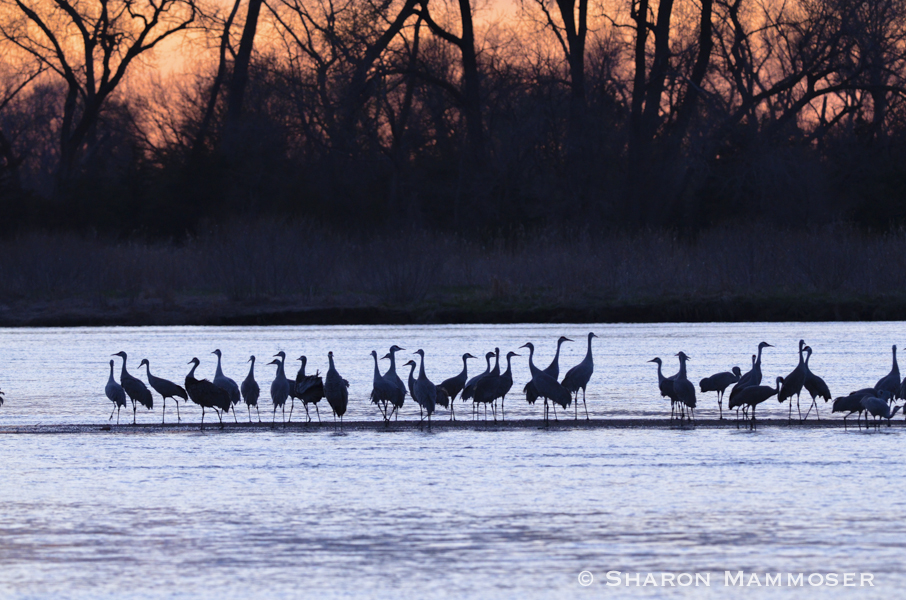
8. The young cranes, called colts, are able to leave the nest hours after hatching. This is called precocial and many ground-nesting birds do this so they can be less vulnerable to predators like foxes and coyotes. Precocial birds hatch with down feathers, open eyes and the ability to leave the nest within hours of hatching. Colts will make their first flight when they are between 65-75 days old. They will accompany their parents during fall migration and stay with them for about 10 months before striking out on their own.
 9. In addition to their recognizable call and long migrations, sandhill cranes are known for their mating dance. The two sexes face each other and spontaneously leap into the air while arching their necks and opening their wings. Adults mate for life though they don’t do so for the first time until they are 4 or 5 years old. And they will find a new mate if theirs dies. And interestingly, young cranes don’t just inherit the ability to dance, they must be taught by their parents!
9. In addition to their recognizable call and long migrations, sandhill cranes are known for their mating dance. The two sexes face each other and spontaneously leap into the air while arching their necks and opening their wings. Adults mate for life though they don’t do so for the first time until they are 4 or 5 years old. And they will find a new mate if theirs dies. And interestingly, young cranes don’t just inherit the ability to dance, they must be taught by their parents!
10. Sandhill cranes are omnivores. They eat a wide variety of material including seeds, grains, insects, snails, tubers,crayfish, frogs, lizards, eggs, and even small rodents or snakes.
So, did you learn anything? Have you witnessed these amazing birds on their fall or spring migration? Do you have anything you’d like to add? If so, feel free to use the comment box below–I always want to hear from you!

